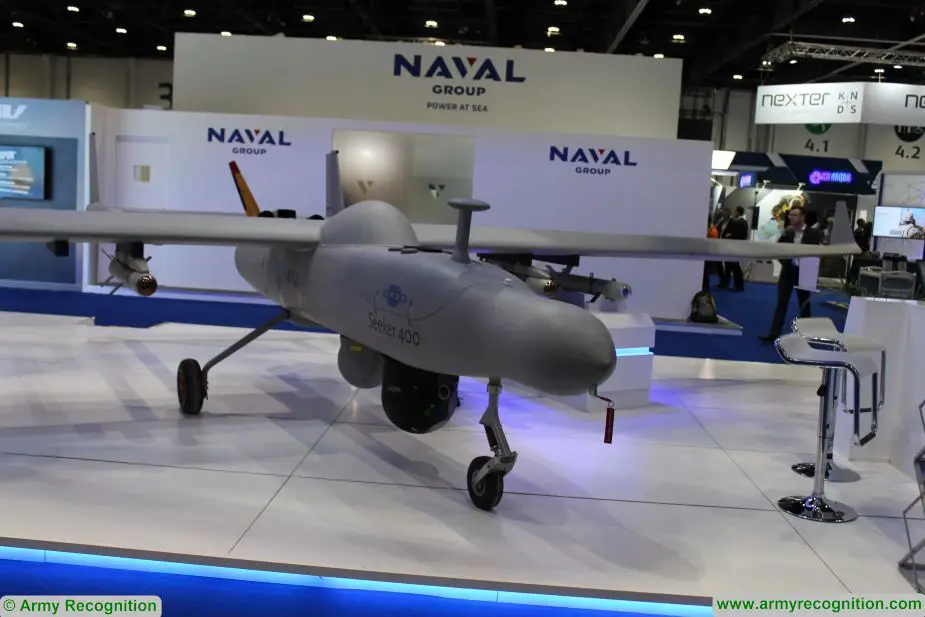Breaking news
UMEX 2020: Denel Dynamics exhibits its Seeker 400 UAV.
At UMEX 2020, taking place in Abu Dhabi, UAE, South African company Denel Dynamics exhibits its Seeker 400 Unmanned Aerial vehicle.

(Picture source Army Recognition)
The Seeker 400 is an unmanned aerial vehicle surveillance system designed and manufactured by the South African Company Denel Dynamics. The Seeker 400 is an evolution of the battle-proven Seeker II UAS. This self-contained system with operational spares offers: a large payload carrying capability; high-definition video imagery; real-time data acquisition and transmission to remote receivers; autonomous takeoff and landing capability; external wing hard points for carriage of external fuel tanks or weapons; multiple sensor payloads; manual and autonomous capability (flight control and payload control); brake-assisted ground operation; separate or combined shelter configurations for the Mission Control Unit (MCU) and Tracking and Communications Unit (TCU); and integration with customer-preferred payloads (such as Communications Intelligence (COMINT), Electronic Intelligence (ELINT) and Synthetic Aperture Radar (SAR). In February 2014, Denel’s Seeker 400 unmanned aerial system (UAS) completed its first round of flight tests at the Alkantpan test range in the Northern Cape, after a three year development process.
The Seeker 400 is powered by a single four stroke aircraft engine, which produces 63.4kW of output power. The highly efficient engine and large fuel capacity provide up to 16 h endurance, service ceiling of up to 18 000 ft and payload capacity of up to 100 kg. The Seeker 400 System operates at direct line-of-sight (LOS) ranges of up to 250 km from the base station and can be used to provide real-time day and night reconnaissance, target location and designation, artillery fire support, ELINT and Electronic Support Measures (ESM) and Border and Maritime patrol. Range extension up to 700 km with passing control of UAV via the secondary MCU and TCU. It can carry a maximum payload of 100 kg.
The whole system includes four to six UAVs, MCU (Mission Control Unit) and TCU (Tracking and Communications Unit) units, payloads, field support equipment and optional secondary MCU and TCU. The Mission Control Unit (MCU) is the main interface between the mission control crew and the UAV. Its functions include mission planning and simulation, UAV control and monitoring, communications control , and Dual Payload control. Workstations have identical hardware, with dedicated software enabling specific functions.
The Tracking and Communications Unit (TCU) of the Seeker 400 contains the dual redundant tracking and communications equipment that maintains contact with the UAV. It facilitates dual payload operation and transmission of high definition imagery. It is an unmanned, separate unit that can be located up to 200 m from the MCU, enabling it to be positioned for optimum LOS communication. The stand-alone TCU has the additional benefit of providing safety to the crew in the event of an air-to-ground weapon strike onto the TCU. The Seeker 400 could be armed with two Mokopa anti-tank missiles under each wing.


























